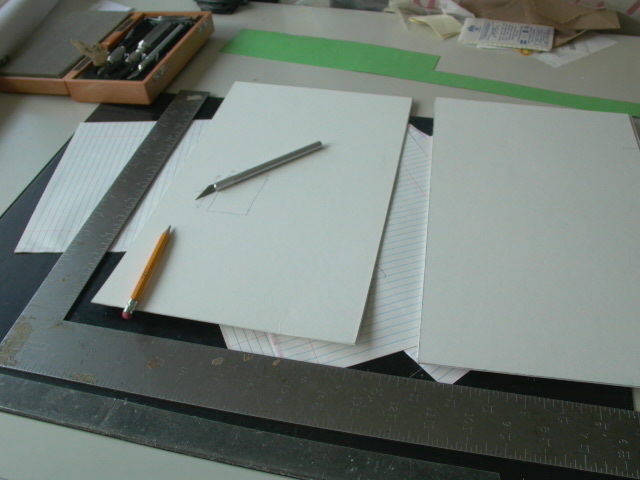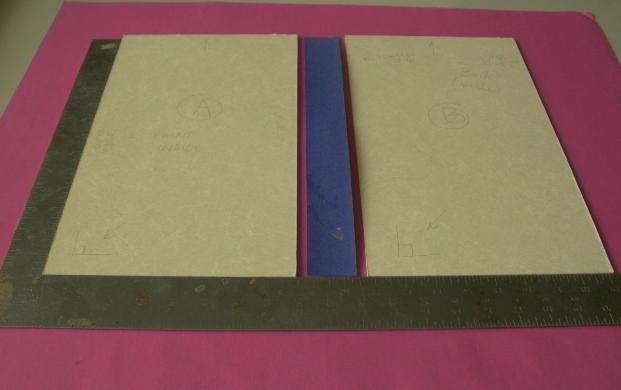
Once the text block was complete, the next step was to build the covers. This began with two cover boards of the same size; one for the front cover and another or the back. A good thickness for the boards is about 1/8” thick. You can use wood or solid cardboard (I do not recommend corrugated or foam boards). I used 1/16” thick cardboard, cut to size and glued to desired thickness (1/8” thick).

When a cover board is placed on top of a text block, there should be
1/8” of overhang on three sides (top, bottom and right) and ¼” of
shortage along the left side (the side with the stitching). Therefore,
the size of the boards should be 1/4” taller than the text block and 1/8”
narrower.
I used legal size sheets (8.5” x 14”) for the text block, thus the
cover boards measured 8.375” by 14.25”. Because I used 1/16” thick
cardboard, four (4) boards were needed to make two (2) 1/8” thick covers.
A carpenter’s square was used to ensure perfect right angle corners (above).
I used spray-on adhesive to glue the boards together. Rough edges
of the boards were then sanded.

I used leftover poster board material for the spine (above). Using white Elmer’s glue, two pieces of poster board strips were glued together for double thickness. When the glue has dried, the spine was trimmed to size. The height of the spine should be same as that of the cover boards, and width should be the thickness of the text block plus the thickness of the front and back cover boards (thickness of text block plus ¼”). Use only non-acidic glue, such as PVA glue (i.e. Elmer’s white glue). Carpenter’s yellow glue is acidic, and can cause paper to become hard and brittle over time.
Next
Step: Covering the Cover
Back to the Bookbinding Introduction Page
Back to "Projects" Page
Home
Created on: May 29, 2008
Copyright (c) 2008 Alvenh
Channe.